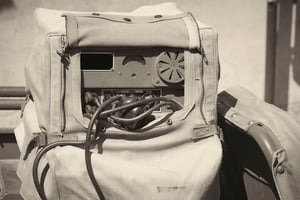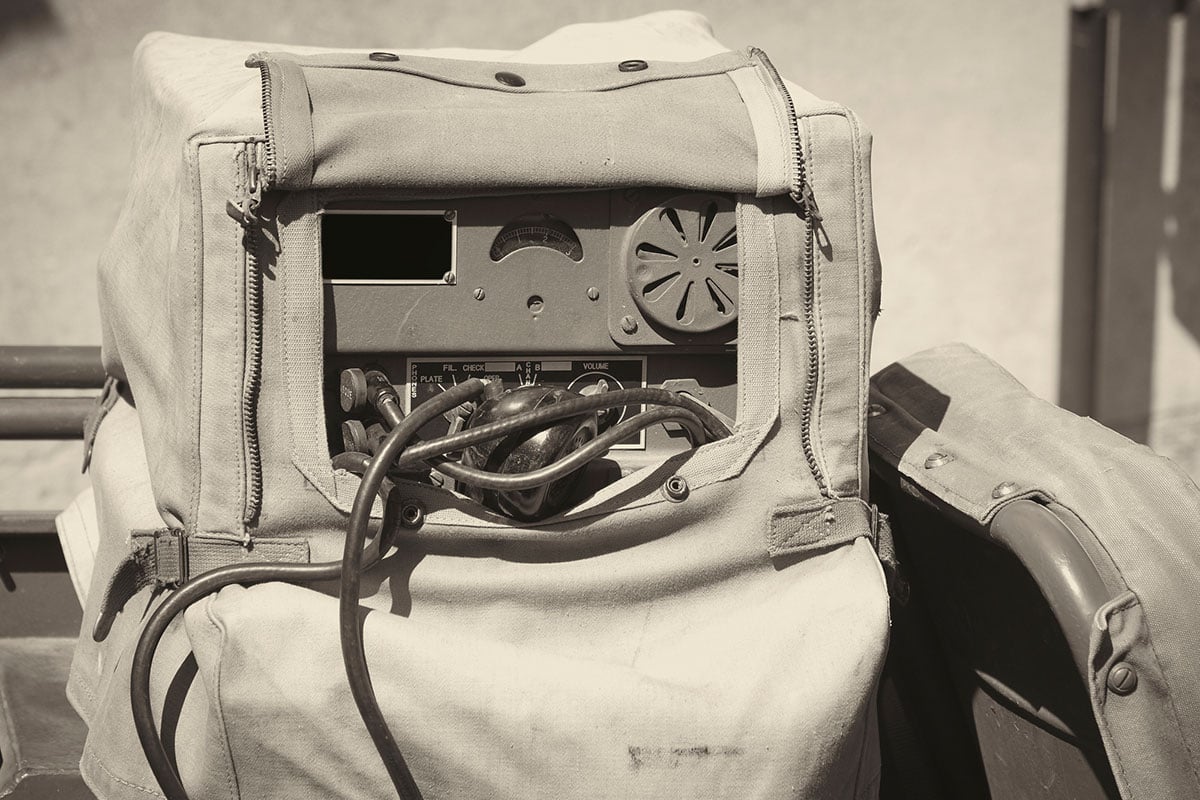 To fully appreciate how far two-way radio communication has come, it's fascinating to take a look at where it started. From the initial discovery of “wireless waves” in 1886 to today’s technology that can turn any mobile device or computer into a radio, it’s been a long, winding, and increasingly sophisticated road.
To fully appreciate how far two-way radio communication has come, it's fascinating to take a look at where it started. From the initial discovery of “wireless waves” in 1886 to today’s technology that can turn any mobile device or computer into a radio, it’s been a long, winding, and increasingly sophisticated road.
And it all starts with German physicist Heinrich Rudolf Hertz, who didn’t think his wireless discovery would go anywhere.
Here's a brief history lesson into the evolution of two-way radios.
No ‘Practical Application’
In 1886, Hertz became the first person in history to broadcast and receive radio waves. But at the time, the skeptical scientist wrote: "I do not think that the wireless waves I have discovered will have any practical application."
What he and his colleagues couldn’t have known at the time is that his discovery would go on to lay the groundwork for the invention of the wireless telegraph, the radio, and TV. Today, his name forms the terms we use for electrical and radio frequencies: kilohertz (kHz) or megahertz (MHz) - including two-way radio frequencies.
Two-Way Radio Precursors
Eventually, engineers and inventors caught on to the potential of Hertz’s discovery, and a variety of radio milestones were achieved from the late 1880s to the early 1920s.
Some early achievements include:
- The first entertainment radio broadcast in history was on Christmas Eve 1906, when inventor Reginald Fessenden beamed a music show to ships in the Atlantic Ocean from a station in Massachusetts;
- The first successful two-way transmission across the Atlantic, which included an exchange of Morse code messages;
- The regular use of radio communications for ships at sea, including – controversially – aboard the doomed Titanic. Different accounts either blame or credit radio for costing or saving lives.
Who Was First?
The first two-way radio as we know it today appeared sometime in the 1920s or 1930s, but there is widespread disagreement about who had it first.
The contenders are:
Frederick William Downie, the senior constable of the Victorian Police in Australia, is credited with being the first after introducing mobile two-way radios to patrol cars in 1923. The radios, while novel, reportedly took up the entire back seat of the vehicles.
Galvin Manufacturing Company, the company that became Motorola, created the SCR-300 (pictured above) for the U.S. military in 1943. The 35-pound portable radio transceiver was nicknamed “walkie-talkie” and was mounted on a backpack. It had a two-way radio range of 10-20 miles. The company made almost 50,000 of them during the war.
Alfred J. Gross was a radio engineer who also worked on the technology that powered the early walkie-talkies between 1934 and 1941.
Canadian inventor Donald Hings is also credited with inventing the walkie-talkie after creating a portable radio signaling system in 1937. His model C-58 “Handy-Talkie” was used by the military by 1942.
Taking it to the Next Level
Regardless of who invented two-way radios, most sources agree that Motorola has done the most to evolve the technology.
After the war, the use of radios spread among public safety agencies, amateur radio enthusiasts, and commercial industries. In 1947, for instance, Motorola debuted its portable two-way radios specifically for the industrial market.
Today, Motorola Solutions produces two-way radios, applications, and accessories for public and private customers all over the world. Technology is available that links two-way radios to smartphones, laptops, and desktop computers, making their reach even more impressive. Two-way radio features such as push-to-talk have been so popular they've been replicated on digital devices.
Given the breadth of their uses and versatility over time, it isn't hard to see why so many companies and agencies continue to choose two-way radios over cell phones.
And, perhaps most importantly for today’s users, radios have lightened up significantly, coming down in weight from 35 pounds to just 3.5 ounces for the smallest ultra-compact model available. (Here are more facts to help you learn everything you need to know about two-way radios, as well as choose the best handheld two-way radio for your team.)
If only Mr. Hertz could see what his impractical experiment has led to.
To learn more about creating and maintaining a successful two-way radio system, contact Chicago Communications to set up a free consultation.



